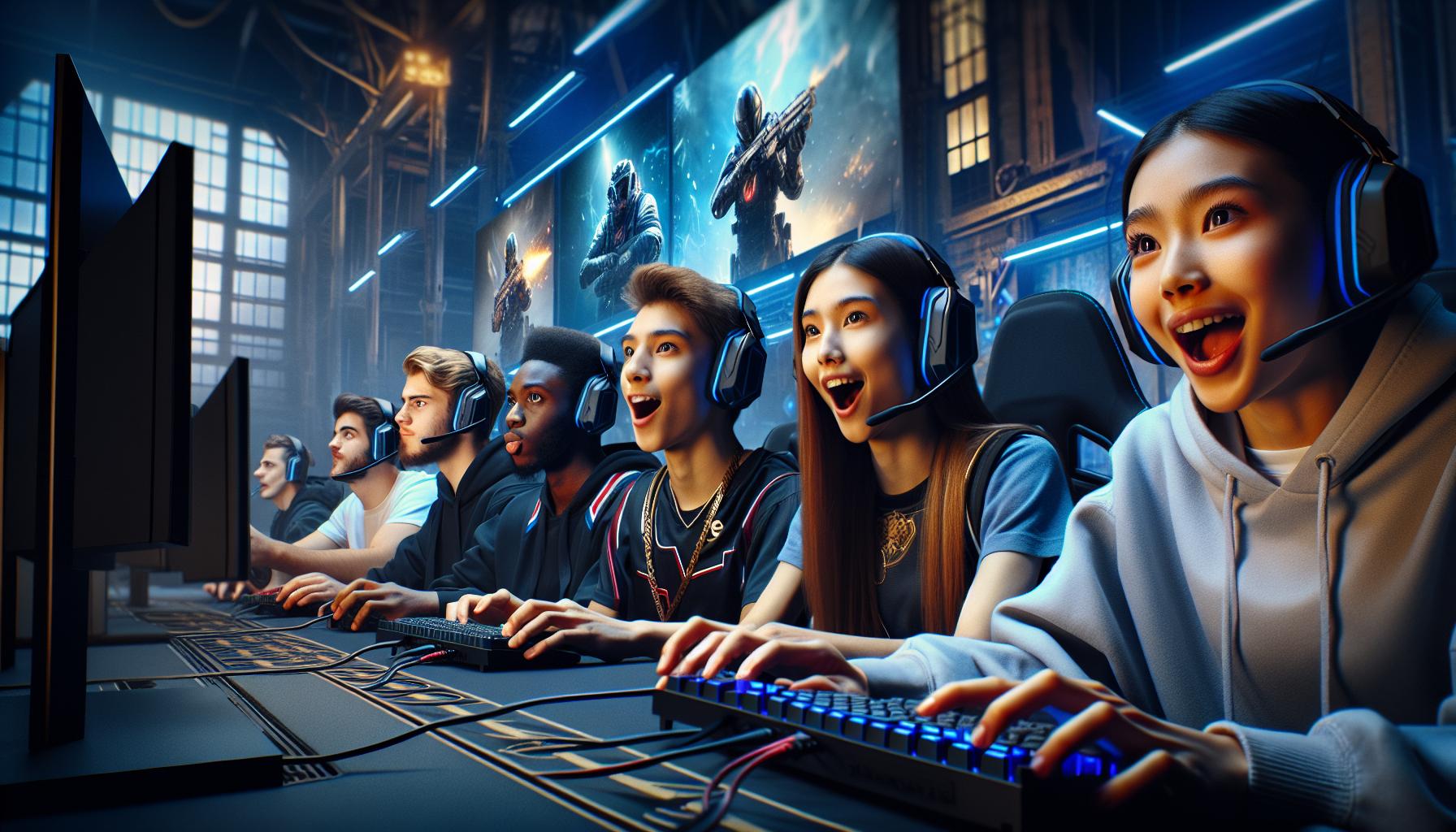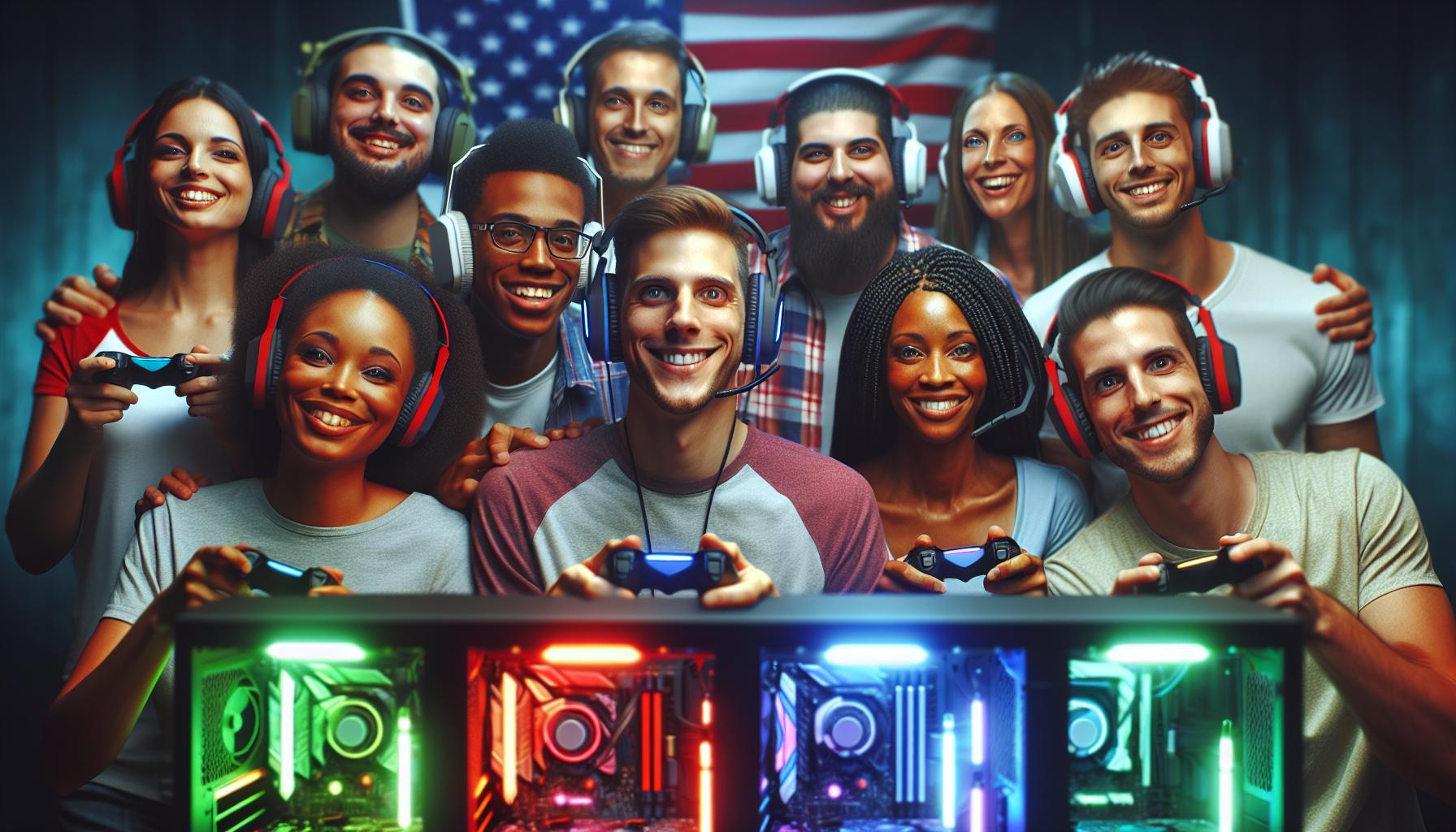Gaming Culture Statistics has evolved from a niche hobby into a global cultural phenomenon that shapes entertainment, social connections and even professional careers. With over 3.2 billion gamers worldwide, the gaming industry continues to break records and redefine how people spend their leisure time.
From casual mobile games to competitive esports tournaments, gaming culture has created its own unique ecosystem. Modern gamers aren’t just teenagers in basements anymore – they’re professionals, parents and grandparents who’ve embraced gaming as a legitimate form of entertainment. The statistics behind this cultural shift tell a fascinating story about how video games have become deeply woven into the fabric of modern society.
Gaming Culture Statistics
Gaming demographics reflect significant shifts in player composition across age groups, gender representation, and geographic regions. These changes highlight gaming’s transformation from a youth-centered activity to a diverse entertainment medium.
Age and Gender Distribution
The gaming community spans multiple generations, with 38% of gamers falling between ages 18-34 and 26% aged 34-54. Female gamers now represent 45% of the global gaming population, marking a substantial increase from 33% in 2010. Mobile gaming has particularly influenced this shift, with women comprising 51% of mobile game players. Players aged 50+ make up 21% of the gaming population, primarily engaging in puzzle games, strategy titles, and casual mobile experiences.
Regional Gaming Preferences
North American gamers gravitate toward console gaming, with PlayStation and Xbox platforms dominating 68% of the market share. Asian markets, particularly South Korea and China, show a strong preference for PC gaming and esports, with 56% of players choosing competitive multiplayer titles. European gaming habits blend both trends, showing equal distribution between PC and console gaming at 41% each. Mobile gaming leads in Latin America and Southeast Asia, capturing 62% of the gaming market due to smartphone accessibility and affordable free-to-play options.
Gaming Industry Market Growth

The global gaming market reached $347.4 billion in revenue in 2023, marking a 12% increase from the previous year. This expansion reflects significant technological advancements, increased digital distribution, and broader consumer engagement across multiple gaming platforms.
Mobile vs Console Gaming Stats
Mobile gaming dominates the market with $192.7 billion in revenue, representing 55% of total gaming revenue. Console gaming generates $84.3 billion annually, maintaining its position as the second-largest segment. Android devices account for 78% of mobile gaming activity, while iOS devices comprise 22%. Regional preferences show distinct patterns:
| Platform | Revenue | Market Share |
|---|---|---|
| Mobile | $192.7B | 55% |
| Console | $84.3B | 24% |
| PC | $70.4B | 21% |
eSports Revenue Trends
The esports industry generated $1.8 billion in revenue in 2023, experiencing a 15% annual growth rate. Tournament prize pools reached $384 million, attracting 532 million viewers worldwide. Key revenue sources include:
| Revenue Stream | Percentage |
|---|---|
| Sponsorships | 45% |
| Media Rights | 27% |
| Publisher Fees | 15% |
| Merchandise | 8% |
| Tickets | 5% |
Asia-Pacific leads the esports market with 38% of global revenue, followed by North America at 32% and Europe at 22%.
Social Impact of Gaming Communities

Gaming communities forge significant social connections through digital platforms, creating diverse networks of players who interact, collaborate, and compete across geographical boundaries. These communities shape modern social interactions and cultural norms in the digital age.
Online Gaming Behavior
Online gaming platforms host 1.2 billion active multiplayer gamers who spend an average of 8.5 hours per week in virtual social interactions. Discord reports 140 million monthly active users connecting through gaming-focused channels for voice chat, messaging, and community building. Multiplayer games like Fortnite attract 80 million monthly active players who engage in both competitive and social activities. The popularity of collaborative gaming experiences drives 65% of players to form lasting friendships through online play. Gaming communities demonstrate strong social cohesion with 78% of players reporting they feel more connected to others through gaming interactions.
Streaming Platform Demographics
Twitch leads gaming livestream platforms with 31 million daily active users spending an average of 95 minutes watching content. The platform’s audience consists of 65% male viewers and 35% female viewers, with the core demographic aged 16-34 representing 73% of total viewership. YouTube Gaming captures 42% of gaming livestream market share through 100 million hours of gaming content watched daily. Facebook Gaming reaches 380 million monthly viewers with 55% accessing content through mobile devices. Top gaming streamers maintain dedicated communities ranging from 500,000 to 18 million followers each, generating significant cultural influence through their content creation.
Gaming Addiction Statistics

Gaming addiction affects 3% of global gamers according to the World Health Organization’s latest assessment. This behavioral disorder impacts players across all age groups with varying severity levels based on multiple diagnostic criteria.
Treatment and Prevention Data
Clinical interventions for gaming addiction demonstrate a 67% success rate through cognitive behavioral therapy. Professional treatment centers report 72,000 annual cases of gaming disorder diagnoses in the United States alone. Successful prevention programs incorporate:
- Digital wellness tools track 89% of excessive gaming behaviors
- Parental controls reduce problematic gaming by 45% in adolescents
- Time management apps decrease gaming sessions by 3.2 hours daily
- Support groups show 56% improved addiction recovery rates
| Treatment Method | Success Rate | Average Duration |
|---|---|---|
| CBT | 67% | 12 weeks |
| Group Therapy | 56% | 16 weeks |
| Digital Limits | 45% | Ongoing |
| Family Support | 71% | 24 weeks |
Healthcare providers document that early intervention programs reduce gaming addiction risks by 78% when implemented before age 16. Specialized treatment facilities report an average recovery period of 90 days for moderate to severe cases.
Gaming’s Impact on Mental Health
Research from the American Psychological Association indicates that gaming influences mental well-being in complex ways, with 76% of players reporting both positive and negative effects on their psychological state.
Positive and Negative Effects
Gaming demonstrates significant cognitive benefits, enhancing problem-solving abilities in 68% of regular players and improving memory retention by 42% according to a 2023 study by the Journal of Behavioral Science. Players experience reduced stress levels after 30 minutes of casual gaming, with a 23% decrease in cortisol levels measured across test groups. Multiplayer games boost social connection, as 71% of online gamers report forming meaningful friendships through gaming platforms.
Conversely, excessive gaming correlates with increased anxiety in 34% of heavy users who play more than 20 hours weekly. Studies show that late-night gaming disrupts sleep patterns for 57% of teenage players, leading to decreased academic performance. Competitive gaming environments trigger stress responses in 45% of players, particularly during ranked matches or tournaments. Social isolation affects 28% of players who substitute real-world interactions with virtual ones, according to data from the National Institute of Mental Health.
| Gaming Impact Category | Percentage Affected | Key Finding |
|---|---|---|
| Problem-solving Enhancement | 68% | Improved cognitive abilities |
| Stress Reduction | 23% | Decreased cortisol levels |
| Social Connection | 71% | Meaningful friendships formed |
| Anxiety Increase | 34% | In heavy users (20+ hours/week) |
| Sleep Disruption | 57% | Among teenage players |
Gaming Industry Employment Statistics
The gaming industry offers diverse career paths across multiple sectors, employing 4.3 million professionals globally. Employment opportunities in gaming continue expanding with a 27% growth rate since 2019.
Career Opportunities in Gaming
Game development studios employ 185,000 developers worldwide, with 71% working on mobile games. Software engineers make up 42% of gaming industry positions, followed by artists at 24% and designers at 18%. Major gaming companies like Electronic Arts, Ubisoft, and Nintendo each employ over 10,000 professionals across various roles.
| Role Type | Percentage of Industry Jobs | Average Annual Salary (USD) |
|---|---|---|
| Software Engineers | 42% | $105,000 |
| Artists/Animators | 24% | $78,000 |
| Game Designers | 18% | $85,000 |
| QA Testers | 8% | $55,000 |
| Project Managers | 5% | $95,000 |
| Other Roles | 3% | Varies |
Emerging roles include esports management positions growing at 35% annually. Remote work opportunities increased by 127% since 2020, with 68% of gaming companies now offering hybrid work models. Gaming industry professionals receive 22% higher compensation compared to traditional software development roles. Entry-level positions start at $45,000 while senior roles command salaries exceeding $150,000.
Modern Gaming Demographics
Gaming Culture Statistics culture has evolved into a dynamic global phenomenon that transcends traditional demographics and boundaries. The industry’s remarkable growth to $347.4 billion in revenue reflects its widespread appeal across age groups gender and geographical regions. With 3.2 billion active players worldwide gaming continues to shape social connections career opportunities and mental well-being.
The statistics paint a clear picture: gaming isn’t just entertainment—it’s a cultural force that’s reshaping how people connect learn and work. From mobile gaming’s dominance to the rise of esports the industry shows no signs of slowing down. As technology advances and gaming communities grow these numbers will likely continue their upward trajectory shaping the future of digital entertainment and social interaction.

